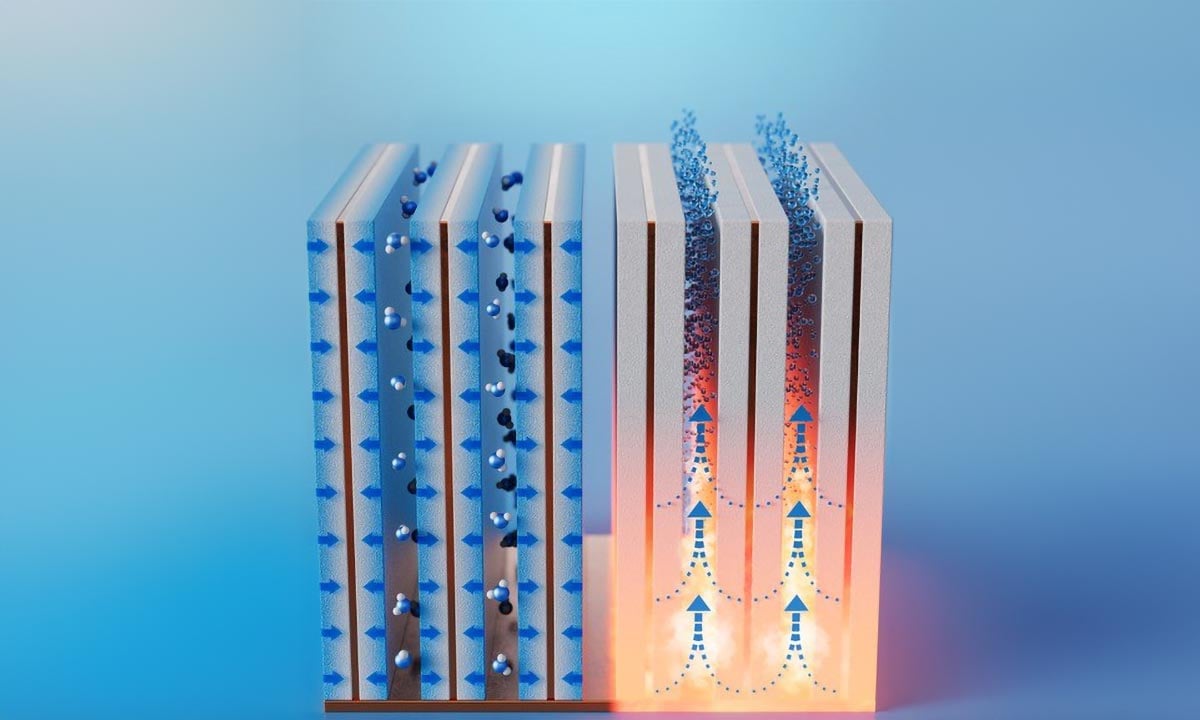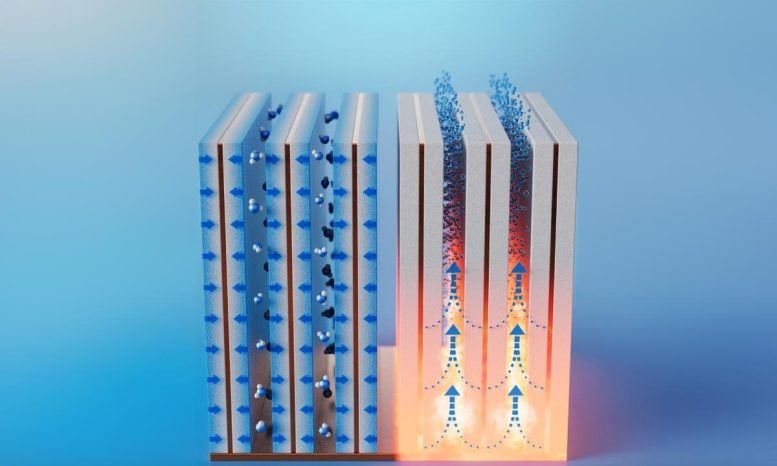

A simple, compact system first collects moisture from the air (left) and then releases the trapped liquid (right) when heated, which results in potable water. Credit: Xiangyu Li, edited
Researchers have developed a compact device that harvests water from atmospheric humidity using absorbent-coated fins.
This device, detailed in ACS Energy Letters, efficiently traps moisture which is then released as potable water when heated.
Water Harvesting Innovation
Clean, safe water is a limited resource, and access to it depends on local bodies of water. But even dry regions have some water vapor in the air. To harvest small amounts of humidity, researchers in ACS Energy Letters have developed a compact device with absorbent-coated fins that first trap moisture and then generate potable water when heated. They say the prototype could help meet growing demands for water, especially in arid locations.
Atmospheric Water: Vast Potential, Collection Challenges
Earth’s atmosphere holds trillions of liters of fresh water as vapor, but it’s challenging to collect this colorless, transparent, and dilute gas. Previously, researchers developed systems that trap dew or fog, pooling the liquid into containers. But in dry areas that don’t have much dew, special materials like temperature-responsive hydrogels, metal-organic frameworks or zeolites (crystalline aluminosilicates) may help pull small amounts of moisture from the air and release the water when heated.
However, for these absorbents to be practical for real-world use, they need to be incorporated into compact and portable devices with a waste heat source, such as applications that run at high temperatures or systems that emit heat as a by-product. So, Xiangyu Li, Bachir El Fil, and colleagues developed a humidity harvester that could fit those specifications.
Efficient Design Enhances Water Collection
The researchers designed water-adsorbent “fins” by sandwiching a copper sheet between copper foams coated in a commercially available zeolite. Compared to previous studies that focused on material development, the authors say that the co-design of the adsorption bed with material properties resulted in thin adsorbent fins, which are compact and can quickly harvest water.
For proof-of-concept demonstrations, they created a device with 10 small adsorbent fins placed side by side on a copper base plate about 2 millimeters apart, a distance that maximizes moisture capture from desert-like air containing 10% relative humidity. Within an hour, the fins saturated and then released the trapped moisture once the base reached 363 Fahrenheit.
Extrapolating to 24 collection-release cycles, the team calculated that 1 liter of absorbent coating on the fins could produce up to 1.3 liters of potable water per day in air with 30% relative humidity — a volume two to five times greater than previously developed devices.
Implications for Future Water Harvesting Technologies
The work identifies a key opportunity for rapid moisture capture and water harvesting from dry air, multiple times per day. With further development, this system could be integrated into existing infrastructures that produce waste heat, such as buildings or transportation vehicles, to provide a cost-effective option for generating potable water in arid regions, the researchers say.
Reference: “Design of a Compact Multicyclic High-Performance Atmospheric Water Harvester for Arid Environments” 26 June 2024, ACS Energy Letters.
DOI: 10.1021/acsenergylett.4c01061
The authors acknowledge funding from the U.S. Defense Advanced Research Projects Agency and the Swiss National Science Foundation through a Postdoc. Mobility grant.